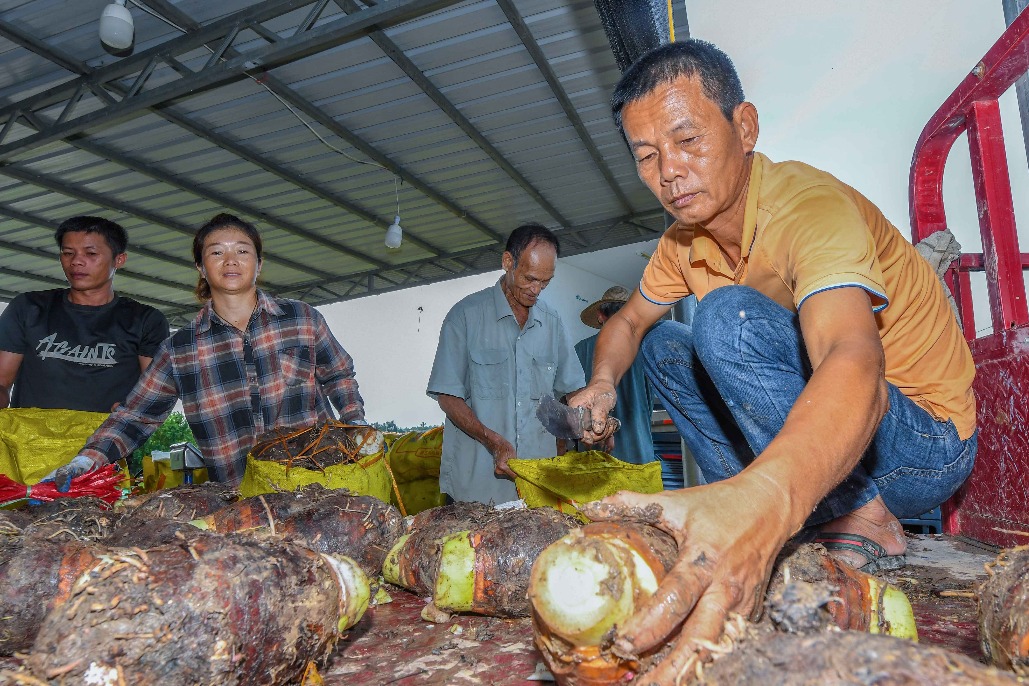Modified guidelines to treat virus outlined


Modifications to China's COVID-19 diagnosis and treatment guidelines are aimed at relieving strains on the medical system in the face of the highly contagious Omicron variant, officials and experts said.
The less stringent protocols are a timely upgrade, rather than an abandonment of the country's dynamic zero-COVID policy, which is striving to maintain balance between novel coronavirus control work and people's normal lives.
The National Health Commission released a pilot edition of the ninth COVID-19 diagnosis and treatment guidelines on Tuesday evening.
It said that people with a mild COVID-19 infection, defined as having a slight fever and fatigue but no signs of pneumonia, will be put in a centralized quarantine facility rather than a designated treatment hospital. "They will be given therapies and monitored during isolation," it said. "If their condition worsens, they will be transferred to designated hospitals for further treatment."
To prevent cross infection, centralized quarantine facilities for patients with mild cases should not be shared with overseas travelers suspected to be infected, as well as close contacts, the guideline said.
"Local authorities have reported that the majority of Omicron patients are asymptomatic or only showing mild symptoms, and they do not need much treatment," the commission said in a statement explaining the new guidelines.
Recovered patients only need to monitor their condition at home for seven days after being discharged from the hospital, instead of undergoing 14 days in isolation.
Zeng Guang, chief epidemiologist at the Chinese Center for Disease Control and Prevention, said the adjustment is pragmatic and scientific, and suitable for regions recently hit hard by the virus.
The new protocol will help medical institutions implement triage procedures and ease surging pressure, he said, adding that more fine-tuning is expected.
The Chinese mainland reported 1,860 locally transmitted, confirmed infections and 1,194 asymptomatic cases on Tuesday. Both counts went down from the previous day. Outbreaks in Jilin province in Northeast China and other regions are still developing, according to the commission.
Zhang Hongtao, a former professor at the University of Pennsylvania's Perelman School of Medicine, said in an article on Wednesday that due to the lack of triage treatment policies, public hospitals in Hong Kong have been stretched so thin during the city's fifth wave of the epidemic that a large number of at-risk patients were turned away.
A stratified management system can prevent such a problem, he said, adding that adopting centralized quarantine, rather than at-home isolation used in some foreign countries, will better prevent the virus's spread.
Zhang said the new guidelines also signaled a move to align with international testing standards.
During nucleic acid tests, a value of cycle threshold-the number of cycles needed for a sample to be detectable-can determine whether a sample is considered positive.
For a long time, China has used a cycle threshold value of 40, higher than the international standard of 35. The newly released document has officially approved the use of a cycle threshold value of 35. "This rule will reduce unnecessary isolation and make operation of medical systems more efficient," Zhang said.
Two COVID-19 drugs approved recently by the national drug regulator have been recommended for use by the guideline changes. They are Paxlovid, an antiviral pill developed by Pfizer, and a monoclonal antibody developed domestically.
Protocols for people who test positive after rapid antigen tests, which were approved for nationwide use last week, are also laid out.
Although China is adjusting its virus control policies and aligning with some global practices, experts said the basic principle of stemming local outbreaks as soon as possible remains unchanged.
Wang Guiqiang, head of the infectious disease department at Peking University First Hospital, told Shenzhen Satellite Television that the changes are meant to adapt responses to the Omicron strain, while achieving adequate distribution of medical resources.
He stressed that the document signals intensified efforts in devising science-based and stratified strategies, rather than giving up the fight against the virus.
- Nation's health outcomes gain recognition
- Sichuan's ethnic festival attracts thousands of tourists
- SCO Digital Economy University Alliance launched
- Experience from a first-person perspective a sniper shooting from a boat
- Humble root crop becomes vital industry in Haikou village
- Sniper showdown on water: Realistic battlefield simulation





































